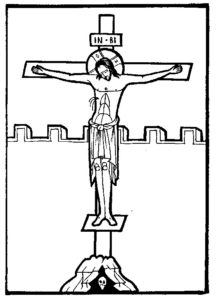 In the week following the First Sunday in Lent, we will observe the Lenten Ember days – days set aside for additional fasting, prayers for the bounty of the earth, and prayers for the ordained clergy.
In the week following the First Sunday in Lent, we will observe the Lenten Ember days – days set aside for additional fasting, prayers for the bounty of the earth, and prayers for the ordained clergy.
Ember days occur four times a year in the Church calendar and it is believed that their origin lies in pre-Christian agricultural observances. The Church often “baptized” those things which the newly-converted had held to be important and gave them a Christian significance. Some of the earliest Fathers of the Church in the West (Ember Days do not appear on the Byzantine calendar) made reference to the Ember Days: Pope Callixtus I (217-222) called for these days of fasting, as did Pope Leo the Great (440-461) and Pope Gelasius I (492-496).
The exact dates of the Ember Days were not at first regulated, so that local bishops set them for their own dioceses. As their observance spread from Rome throughout the West (to Britain with St. Augustine at the direction of St. Gregory the Great at the end of the 6th century, to Gaul in the 8th century, and to Spain in the 11th century), uniformity was established for the days to be held on the Wednesday, Friday and Saturday following St. Lucy’s day (in Advent), following the first Sunday of Lent, following Pentecost, and following Holy Cross Day (September 14). This maintains a connection with the four agricultural seasons of winter, spring, summer, and fall but also connects the fast days to important occasions or seasons in the Church’s calendar.
In St. Leo’s day, most Wednesdays, Fridays and Saturdays were fast days in the West, so the Ember days were designated as fasts for a specific purpose. By the time of Pope Gelasius I at the end of the 5th century, the connection of Ember Days to ordinations had been established. While ordinations had normally occurred (as they do today) whenever needed, Pope Gelasius began limiting ordinations to these days, and this practice spread until it had become the norm by the 11th century.
The origin of the name “Ember days” is lost in antiquity, but two theories prevail. One is that the term comes from the Anglo-saxon word ymbren, referring to the cycle of the year. The Anglo-Saxon use of ymbren-tid (Embertide), ymbren-wucan (Ember weeks), ymbren-fisstan (Ember fasts), and ymbren-dagas (Ember days) makes this seem likely. Another theory is that the word is simply a corruption of the Latin quatuor tempora, the four times of the year when these fasts occur. (The dish “tempura” shrimp and vegetables has its origin in this term, when Japanese sailors observed Portuguese sailors fasting from meat on Ember days).
While the Roman Catholic Church has made the observance of Ember days once again at the discretion of local bishops, and in the Anglican Church they are optional, Western Rite Orthodoxy continues to observe these times, encouraging the faithful to fast and pray for sustenance from the earth’s bounty and for devoted deacons, priests and bishops for the Church.